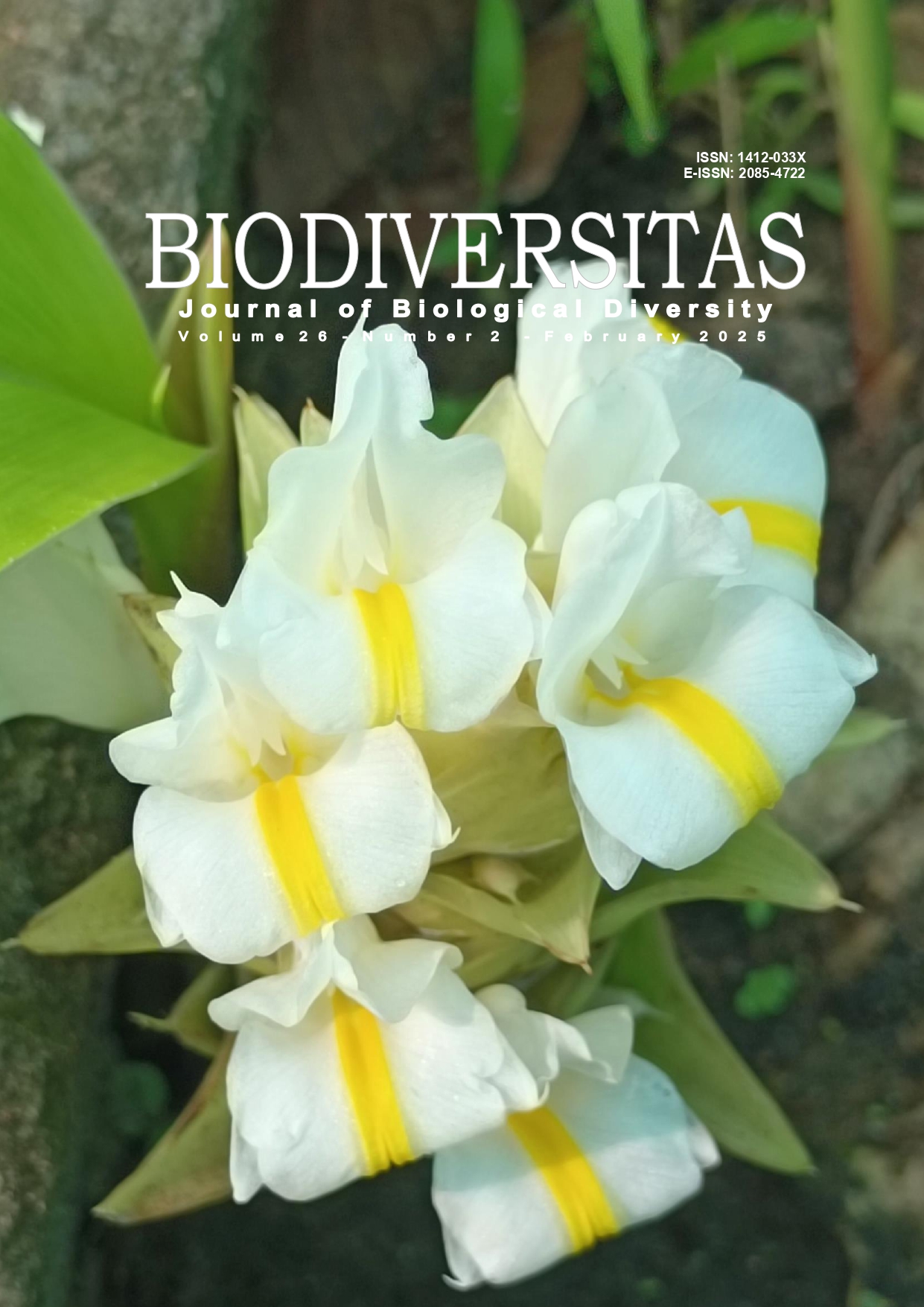Butterfly (Lepidoptera) community structure in several habitat types of Tancak Maesan Forest, Bondowoso, East Java, Indonesia
##plugins.themes.bootstrap3.article.main##
Abstract
Abstract. Rohman A, Subchan W, Buana YC. 2025. Butterfly (Lepidoptera) community structure in several habitat types of Tancak Maesan Forest, Bondowoso, East Java, Indonesia. Biodiversitas 26: 651-661. Butterflies are one of the biota in Tancak Maesan Region, Perhutani, Forest Management Unit (FMU) Bondowoso, East Java, Indonesia. The region encompasses several habitat types. Habitat-type variations can influence butterfly diversity and dispersion. Butterfly species may be impacted by habitat loss, modification, degradation, fragmentation, and the escalation of human population and activities. Alterations in species diversity and richness composition directly influence particular regions as producers of ecological services. This study aimed to analyze the composition of the butterfly community in Tancak Maesan Region, Perhutani, FMU Bondowoso. We documented 29 species of butterflies. The safeguarded forest and waterfall ecosystems (28 species) exhibited the highest butterfly species diversity. Protected forest habitats offer critical components for butterfly survival, including ample nectar supplies for adults, host plants for larvae, and stable microclimatic conditions. Symbrenthia lilaea exhibited the most significant population density and importance value (IVI: 11.11). The Nymphalidae family exhibited the most significant species diversity relative to the other families. The safeguarded forest ecosystem exhibited the highest diversity index (H': 3.291). The residential area exhibits the highest bird evenness index (E: 1.19). The agricultural habitat exhibited the highest dominance index (D: 0.072). The abiotic parameters fall within the acceptable tolerance limit. A total of 49 plant species were identified in the vegetation study. Canonical Correspondence Analysis (CCA) of butterflies indicated that the species Tanaecia sp., Appias albina, Miletus sp., Papilio memnon, Eurema blanda, Tanaecia palguna, Udara akasa, and Oriens gola had a positive correlation with light intensity and wind speed in forest and agricultural environments. In conclusion, butterfly communities exhibit a significant relationship with diverse habitats, particularly protected forest areas, serving as ecological indicators of habitat alteration.
##plugins.themes.bootstrap3.article.details##
Most read articles by the same author(s)
- ABDU ROHMAN, DICKY WAHYUDI, WACHJU SUBCHAN, JUMADIAWAN, Bird community structure and host plant in Sukamade Resort, Meru Betiri National Park, East Java, Indonesia , Biodiversitas Journal of Biological Diversity: Vol. 25 No. 9 (2024)

